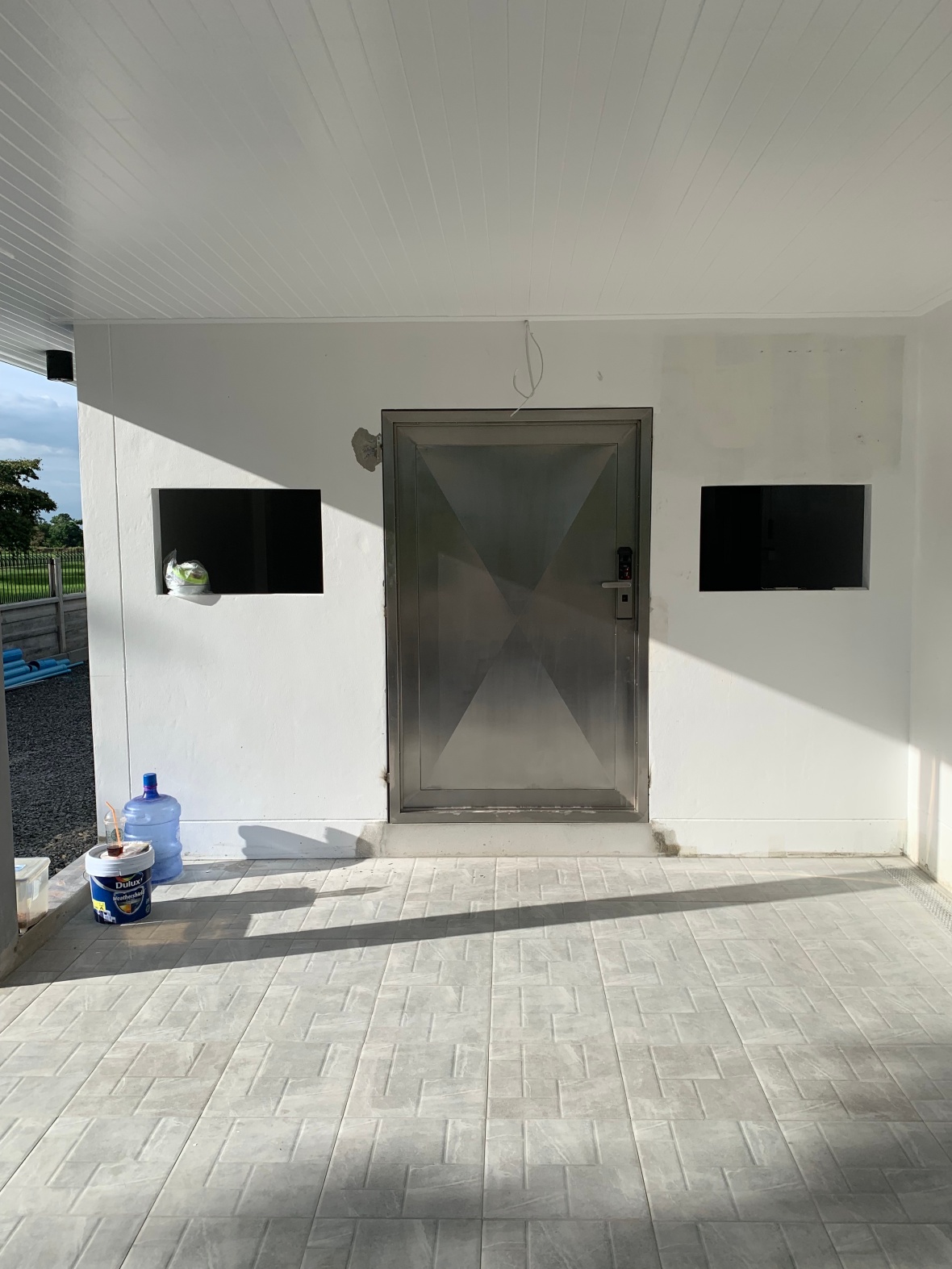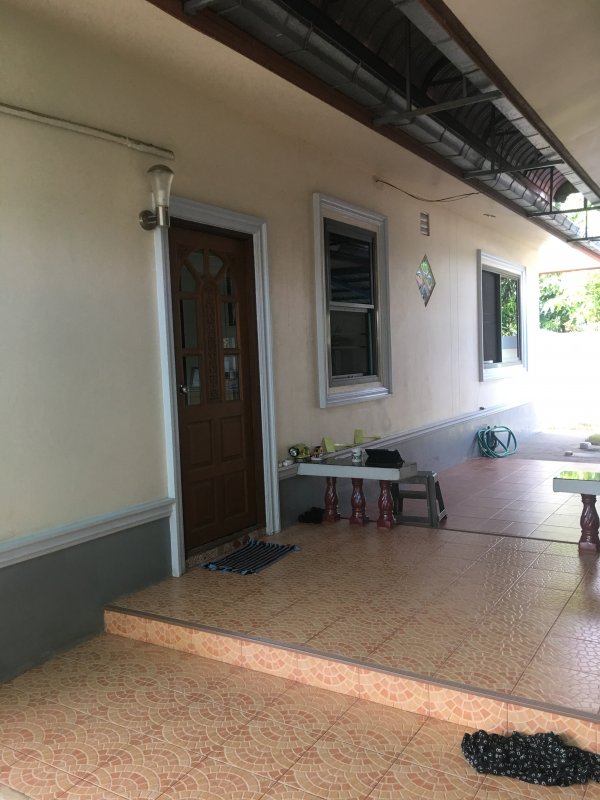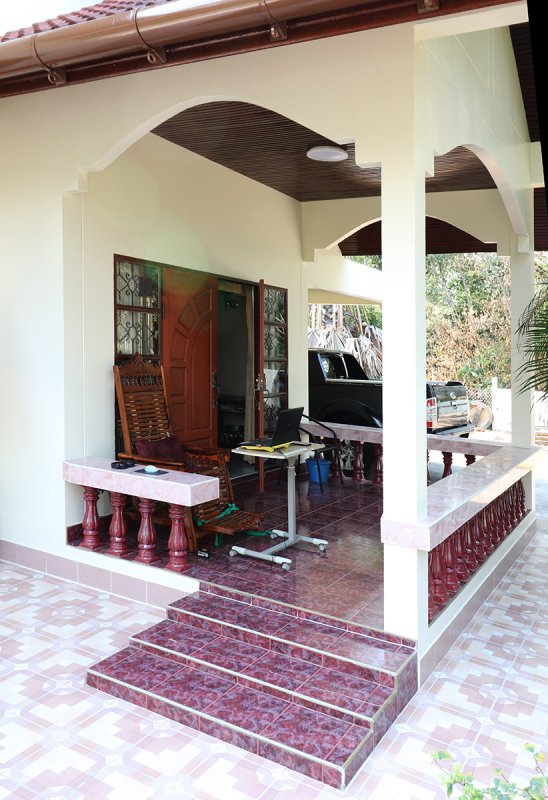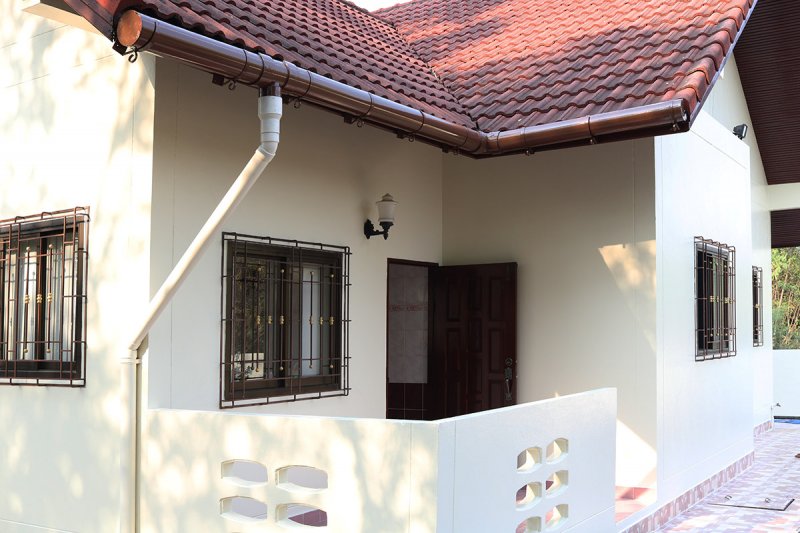You are using an out of date browser. It may not display this or other websites correctly.
You should upgrade or use an alternative browser.
You should upgrade or use an alternative browser.
Rain?
- Thread starter nomad97
- Start date
Bandersnatch
Surin Solar Legend
The picture I posted above was the kitchen door at the back of the house, which opens outwards and locks flat against the wall. The front door opens inward into the porch. I designed the doors and had them fabricated, luckily nobody told me I was doing it wrong!


Yorky
Fullritis Member
The picture I posted above was the kitchen door at the back of the house, which opens outwards and locks flat against the wall. The front door opens inward into the porch. I designed the doors and had them fabricated, luckily nobody told me I was doing it wrong!
Do you have combination locks?
mario299
Surin Founding Father
The picture I posted above was the kitchen door at the back of the house, which opens outwards and locks flat against the wall. The front door opens inward into the porch. I designed the doors and had them fabricated, luckily nobody told me I was doing it wrong!

Bandersnatch
Surin Solar Legend
Do you have combination locks?
Key/Combination/Biometric - We use Biometric on the front door, back door and the door on the third floor as it is quicker. My office and the mechanical room are just combination locks and can sometimes take a couple of attempts.
Yorky
Fullritis Member
When we built back in 2008, I didn't realize why Thai doors swung "out" and not "in", so consequently a couple of our doors allow bugs to crawl under. Some things are "different" here...
I've not really thought about it before. My front and rear doors open outwards. However, I cannot see that inwards opening doors will prevent bugs getting in.
mario299
Surin Founding Father
I have installed literally "thousands" of doors in America, and almost all were "pre-hung with a threshold". Unfortunately, they don't do that here in LOS so you get what you get.
A "threshold" door has bottom "stop" that prevents intrusions from the outside. That doesn't seem to be a concern here...
A "threshold" door has bottom "stop" that prevents intrusions from the outside. That doesn't seem to be a concern here...
mario299
Surin Founding Father
If you look again at my picture, if the door would open out, then it could be taller so as to not allow anything to enter underneath.I've not really thought about it before. My front and rear doors open outwards. However, I cannot see that inwards opening doors will prevent bugs getting in.
mario299
Surin Founding Father
None of what you show displays the bottom of the door, which is my point.
Yorky
Fullritis Member
If you look again at my picture, if the door would open out, then it could be taller so as to not allow anything to enter underneath.
I'm afraid you've lost me on that one.
Bandersnatch
Surin Solar Legend
A "threshold" door has bottom "stop" that prevents intrusions from the outside.
I agree that is preferable. My thinking with the kitchen, was the lack of a bottom "stop" facilitated sweeping out and mopping out water to the back of the house. There is a bottom "stop" between the kitchen and the rest of the house.
Both the kitchen and bathroom are set down a step from the rest of the house to prevent flooding.
Yorky
Fullritis Member
None of what you show displays the bottom of the door, which is my point.
It's too late now to start taking pictures. I'll try tomorrow.
Yorky
Fullritis Member
Could a @Moderators kindly transfer the posts from#378 to #393 to a thread within "House building Forum" or "Isaan Homes" entitled something like "Door Construction"?
Last edited:
mario299
Surin Founding Father
How does the door close? If it is an "outside swinging in" as it appears to be, then is the door taller than the opening?I'm afraid you've lost me on that one.
If it were to be an "inside swinging out", then it could NOT BE taller than the opening, therefore bugs can get in....
Yorky
Fullritis Member
How does the door close? If it is an "outside swinging in" as it appears to be, then is the door taller than the opening?
If it were to be an "inside swinging out", then it could NOT BE taller than the opening, therefore bugs can get in....
I'll take some pictures in the morning.
I really don't understand the terminology "outside swinging in" and "inside swinging out".
My front doors (as all my doors) are 2.000 metres high. The opening at the front is 1.945 metres high because there is a 50mm step at the bottom (in addition to the 90mm step from the stoep) and a 5mm "step" at the top. It's not easy to describe particularly at this time of night.
Last edited:
Yorky
Fullritis Member
Could a @Moderators kindly transfer the posts from#378 to #393 to a thread within "House building Forum" entitled something like "Door Construction"?
Now up to #396.
mario299
Surin Founding Father
Sorry Yorky, not my job to explain the difference to you of a door swinging into the home versus a door swinging out from the home. Obviously one "can" be taller, thus one can stop against the home instead of swinging into the home. You either "get it" or you don't.I'll take some pictures in the morning.
I really don't understand the terminology "outside swinging in" and "inside swinging out".
My front doors (as all my doors) are 2.000 metres high. The opening at the front is 1.945 metres high because there is a 50mm step at the bottom (in addition to the 90mm step from the stoep) and a 5mm "step" at the top. It's not easy to describe particularly at this time of night.
Yorky
Fullritis Member
Sorry Yorky, not my job to explain the difference to you of a door swinging into the home versus a door swinging out from the home. Obviously one "can" be taller, thus one can stop against the home instead of swinging into the home. You either "get it" or you don't.
I understand perfectly the concept of doors swinging into the home and doors swinging out from the home. It's the additions that have me flumoxed. As in "outside" swinging in and "inside" swinging out.
mario299
Surin Founding Father
Jeesus Yorky...a simple Google might help you...I understand perfectly the concept of doors swinging into the home and doors swinging out from the home. It's the additions that have me flumoxed. As in "outside" swinging in and "inside" swinging out.
The majority of external doors will open inwards. This is particularly so in the case of front doors. You get home, you unlock the door, and you push. Whoever heard of a front door that needed to be pulled? But, however often we enter a house through an inward-opening door, we don’t often stop to think about why it’s inward-opening. The prevalence of the design can be explained by three main factors.
Security
The primary function of an exterior door is that of securing the property against would-be intruders. Historically, outward-opening doors would need to have their hinges on the outside. This would provide criminals with the opportunity to sabotage the hinges and thereby remove the entire door. Nowadays, you can find outward-opening doors with their hinges protected – but they’re still more vulnerable than their inward-opening counterparts.
We should also consider that in the case of a front door, having it open inward will make it easier to shut the door on unwelcome doorstoppers, who, if the door opened outward, would be already standing within its arc if they were to move onto the doorstep. Inward-opening doors can also be more easily equipped with extra security features like latches and chains.
Weather
When an external door opens outwards, it’s exposed to the whims of mother nature. A stray gust of wind might slam a set of French patio doors so hard that the glazing shatters – or hard enough to cause anyone nearby to jump out of their skin. Wooden doors that open outward are also more exposed to rainwater than their inward-opening counterparts – particularly if the top of the door hasn’t been finished with the same attention as the front and back. After heavy snowfall, you might also find it impossible to open an outward-opening external door – which in some extreme cases might render the occupant housebound for days on end.
Safety
In some rare circumstances, inward-opening doors can be safer than outward opening ones. In the case of fire, it’s easier for rescuers to smash their way through an inward-opening door. Moreover, having the door open inward will preclude the possibility of opening the door into the face of the unsuspecting caller on the other side – a concern that’s particularly pressing if the door opens straight out onto the pavement.



